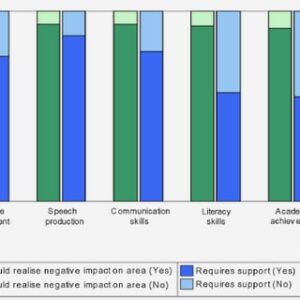(Downloads - 0)
For more info about our services contact : help@bestpfe.com
Table of contents
Chapter 1. General Introduction
Part I – Microbiomes and microbial ecology
1. The world of microorganisms
1.1 What and where are microorganisms ?
1.1.1 The biogeography of microorganisms
1.1.2 Temporal patterns in microbial communities
1.2 Microbiology and microbial ecology
1.3 Microbes are fundamental in ecosystems
1.3.1 Implications in biogeochemical cycles and ecological processes
1.3.2 Microbiotas as a host symbionts
1.3.2.1 The gut microbiome
1.3.2.2 The plant microbiome
1.3.3 Microbiome functional diversity and redundancy, core microbiome
2. Microbiomes’ assembly rules
2.1 Processes behind communities assembly
2.1.1 The relative importance of deterministic and stochastic events
2.2 The niche theory, habitat filtering, and the neutral theory
2.3 Factors and events affecting microbial communities
2.3.1 External or abiotic factors
2.3.2 Selection by the host
2.3.2.1 Vertical transmission
2.3.2.2 Horizontal transmission and pseudo-vertical transmission
2.3.3 Microbe-microbe interactions
2.3.3.1 An overview of ecological interactions
2.3.3.2 Time and spatial patterns affect existence, magnitude, and outcomes of ecological interactions
2.3.3.3 Interactions existence, magnitude and outcome are environment-dependent
3. Data and methods in Microbial ecology
3.1 The -omics revolution
3.2 Metabolic networks and system biology are the basis to study metabolic interactions
Part II. Metabolic cross-feeding with Microbial System Ecology to disentangle coexistence in microbiomes: A mini-review
1 Introduction
2 Metabolic cross-feeding as a major driver of microbiota assemblages
2.1 Evolution and stability of cross-feeding
2.2 The growing importance of metabolic cross-feeding compared to competition
3 Microbial Systems Ecology: a crossroads between system biology and community ecology
3.1 Microbial Systems Ecology approaches and framework
3.1.1 Metabolic network reconstruction
3.1.2 The microbial systems ecology framework calls for shifts between top-down and bottom-up approaches
4 Conclusion
Chapter 2 – Multi-genomes metabolic modelling predicts functional inter-dependencies in the Arabidopsis root microbiome
1 Introduction
2 Materials and Methods
2.1 Genomes data
2.2 Reference database
2.3 Metabolic networks (GEMs) reconstruction
2.4 Metrics from genomes and GEMs
2.5 Targeted Predicted Producible Metabolites (TPPM)
2.6 Nutritional constraint (growth media) modeling
2.7 Putative GEMs combinations for metabolic interactions
2.8 Quasi-Poisson GLMs
2.9 Other statistical analyses
2.10 Scripting
3 Results
3.1 A link between genome-predicted unconstrained metabolism and phylogeny
3.2 SynCom unconstrained PPM are greater than that of single strains and rapidly reaches saturation
3.3 PPM and TPPM number and composition depends on nutritional constraints
3.4 Simplest SynComs are predicted to produce TPPM through metabolic exchanges
4 Discussion
4.1 Fundamental ecological niche signature in GEMs
4.2 Phylogenetic distance, similarity and complementarity, antagonism and cooperation in SynComs
4.3 Metabolism is nutritional-constraint dependent
4.4 Metabolic dependencies are predicted to be major drivers of microbial communities structure.
4.4.1 Metabolic exchanges are nutritional-constraint dependent and compensate severe growth constraints
4.4.2 Minimal combinations of GEMs reflect functional redundancy for targeted compounds
4.4.3 Genomes size effects remains unclear
4.4.4 Few strains are enough to reach the community’s potential
5 Conclusions and prospects
Supplementals
Chapter 3. Cross-feeding and predicted metabolic diversity promote coexistence in A. thaliana root microbiota
1 Introduction
2 Material and methods
2.1 Culture collection and genome-scale metabolic models
2.2 Construction of the predicted produced metabolites gradient
2.3 Bacteria cultures
2.4 Cultures in split-system
2.5 DNA extraction, purification, and sequencing
2.6 Formatting sequencing data
2.7 Data analysis
3 Results
3.1 Reduced competition in SynComs with high PPM
3.2 Cases of cross-feeding identified among many competitive situations
3.3 An Achromobacter sp with an apparent benefit from cross-feeding in three SynComs.
3.4 The constant strain is a slow grower and a weak competitor that could benefit of non-contact secretions
4 Discussion
4.1 The prevalence of antagonistic interactions
4.2 Some strong cross-feeding patterns for Achromobater sp
4.3 Cross-feeding could exist in many cases but might be masked by antagonistic interactions.
4.4 The importance of spatial configuration and metabolites flow
5 Perspectives
Supplementals
Chapter 4. General discussion
1 Metabolic cross-feeding, coexistence, and community assembly : a summary
1.1 The prevalence and importance of cross-feeding
1.2 Cross-feeding selective drivers
1.3 Integration of cross-feeding with competition and environmental factors : from in silico predictions to experimental validation
1.3.1 The difficulty to find simple and appropriate metrics
1.3.2 Cross-feeding as a mostly underlying process compared to competition ?
1.3.3 A few competitive behaviors at the origin of many cross-feeding opportunities ?
1.3.4 Environmental constraints
2 Metabolic cross-feeding is not only about GEMs and various padlocks have to be considered.
2.1 Metabolites availability, secretion, transport, and uptake
2.2 Root exudates composition and their effect on microbiota
2.3 Spatial scale
2.4 Genomes annotation
2.5 Models complexity or simplicity ?
3 Conclusion and perspectives
Supplementary chapter 5 Phylogenetic and functional clustering in a representative bacterial consortia of the Arabidopsis thaliana’s root microbiota
1 Introduction
2 Material and methods
2.1 Data acquisition
2.2 Data filtering
2.3 Co-occurrences network
2.4 Bacterial strains metrics, and scale to the OTU level
2.5 Modules’ phylogenetic distances
2.6 Accumulative null models
3 Results
3.1 The co-occurrences network follows a scale-free topology
3.2 Phylogenetic clustering and functional redundancy in modules
4 Discussion
4.1 The network is a basis to hypothesize interactions, notably between keystone species and the host
4.2 Phylogenetic and functional clustering reveal habitat filtering
5 Conclusion and prospects
General Bibliography


